Today’s post features autumn scenes taken in Banff National Park and in Kananaskis Country. These are my favourites from two outings in the past week. You may think it early to be enjoying autumn colours, but fall comes earlier at our latitude and altitude.
I was was accompanied on this trip to Banff NP by Bob Bear and Bill McAdam. We covered considerable ground in our quest for good scenes, beginning with the Vermilion Lakes, at the Town of Banff. We subsequently traveled west to the area of Castle Mountain and finally returned to Canmore for a few shots in the town.
It was a breezy day, with mostly cloudy skies; conditions that landscape photographers welcome for the interest they can add to a photograph.
My first few first photographs were taken at the Vermilion Lakes, beginning with this long exposure looking west toward Mount Howard Douglas and Eagle Mountain.
This is a long exposure, 75 seconds. Anything in the scene that is static is unaffected by the length of exposure. Anything moving (clouds, waves on the lake, long grasses) are blurred. You can see the differences between the clouds and water in this first picture and the image directly below. Also, the tips of the reeds beside the dock are blurred, whereas the thicker stalks are less affected by the wind and any movement is not very visible.
Consider this a form of artistic expression, not intended to capture the scene exactly as it was, but to produce a softer, more peaceful scene.
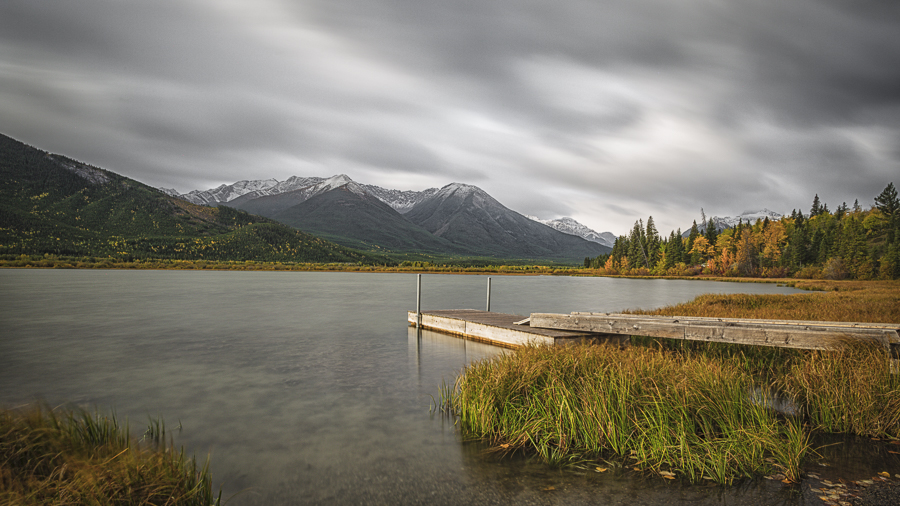
75 sec@f/16, ISO 50
The next scene is very similar to the preceding one, with the important difference that the shutter speed is much faster, 1/100 sec. The waves, clouds and grasses are still moving but do not travel enough in such a short interval as to be noticeable. An entirely different look.
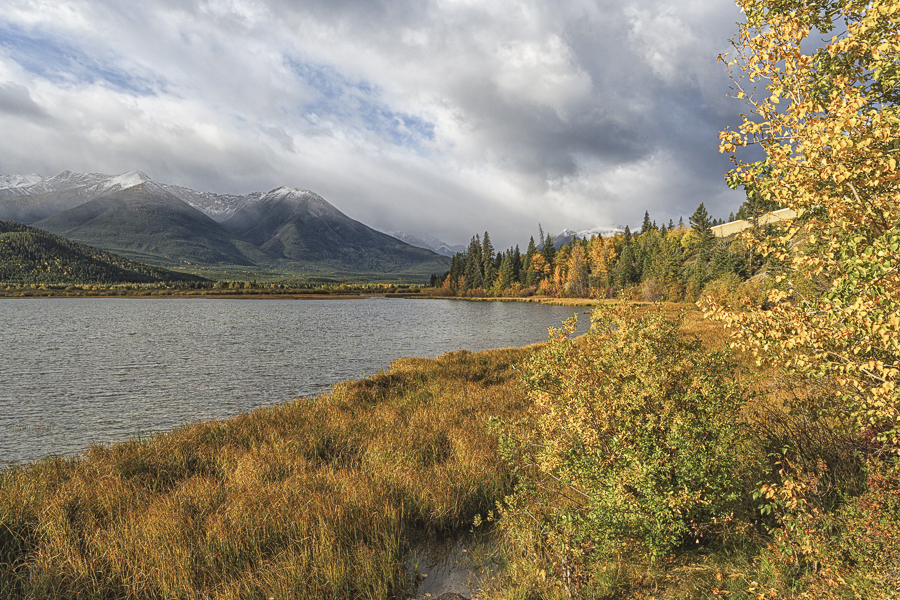
1/100 sec@f/9.0, ISO 125
My final shot from the Vermilion Lakes is this scene taken from a roadside overlook on the Trans-Canada Highway. This is a nice display of the autumn yellow and orange hues, apparent not only in the leaves of the deciduous trees but also in the grasses and reeds in and around the water.
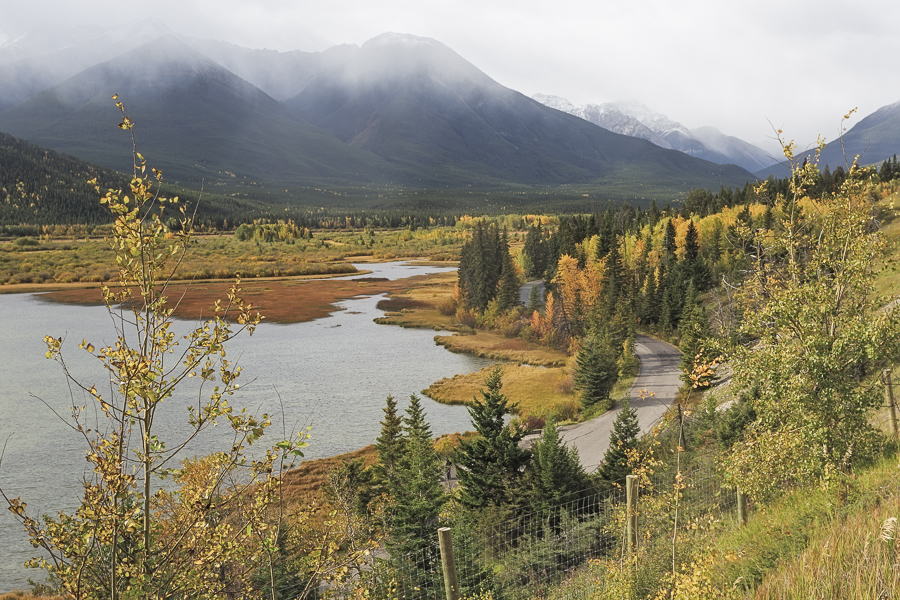
1/50 sec@f/9.0, ISO 125
Moving west to Castle Junction, I took this next shot looking eastward down the Bow River at a point where a tributary creek enters.
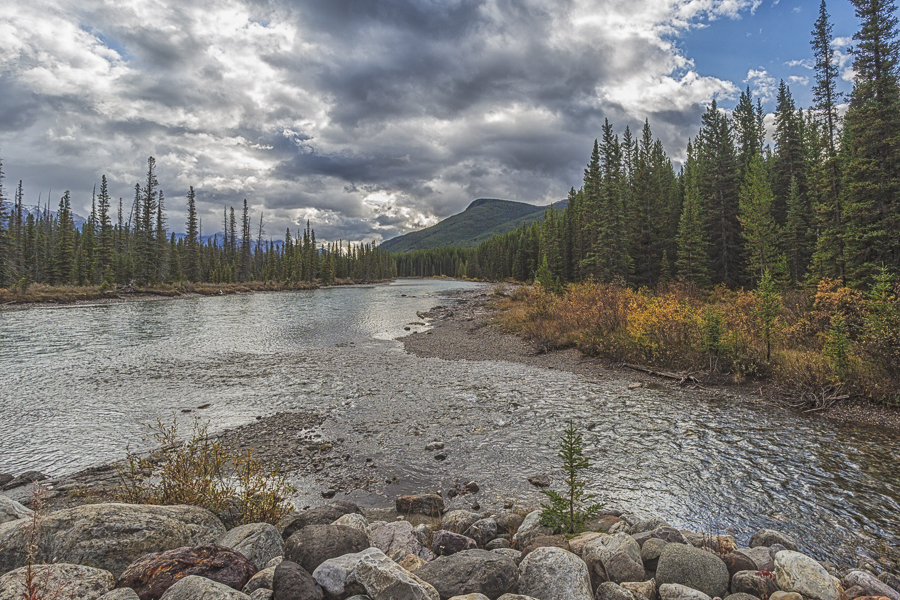
1/80 sec@f/9.0, ISO 125
I’ve photographed Castle Mountain many times over the years, but never from this location. As I turned around after shooting the previous image, I saw this view of the mountain with the bridge over the Bow in the foreground.
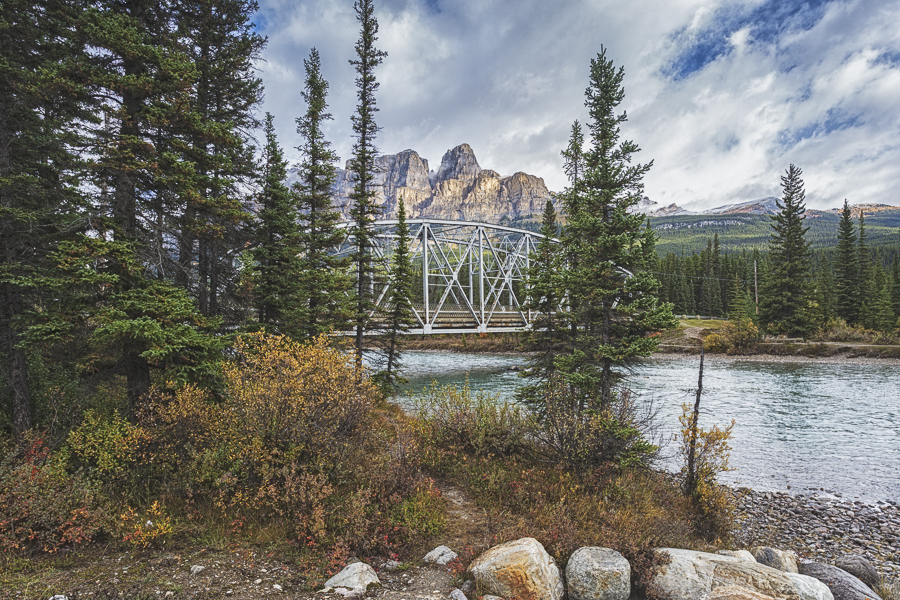
1/25 sec@f/9.0, ISO 125
My final scene, at the Upper Kananaskis Lake was taken earlier in the week when I traveled solo to the area. This is another long exposure (250 sec.) That’s a little over 4 minutes and at the time, it seemed like an eternity.
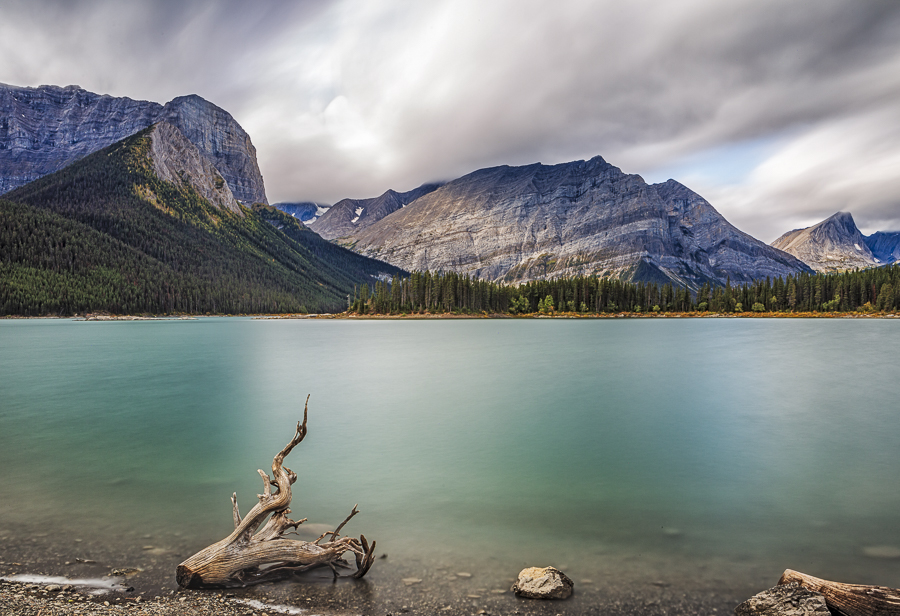
250 sec@f/20, ISO 50
In order to get a proper exposure over such a long period of time, it is necessary to reduce the rate at which light is recorded on the camera’s sensor. This is achieved by reducing the sensor’s sensitivity to light (ISO 50), choosing a small aperture (f/20 in this case) and heavily filtering light as it enters the lens. In this case I used a 10-stop, neutral density filter, adding a further 10 stops of resistance to light reaching the sensor. The necessary light gets there, but it takes a lot longer. Because of the heavy filtering, you can’t rely on the camera’s light meter or auto-focus to expose and focus the shot. That’s all done manually before installing the filter. There is no automatic setting of the shutter either, making it necessary to manually operate it . Getting the correct time exposure can be estimated but normally requires a few iterations to get it just right.
